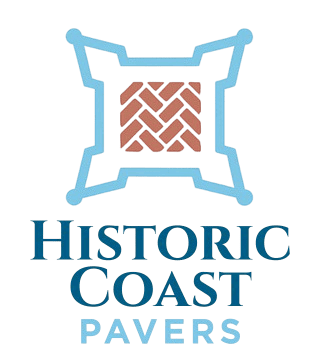Welcome to Part 4 of our 5-part DIY paver installation series for St. Augustine and St. Johns homeowners. With your base prepared, it’s time to lay and cut pavers to create a stunning coastal patio, walkway, or driveway. Historic Coast Pavers shares expert tips to ensure your outdoor living space shines in St. Augustine’s salty air and storms.
Why Proper Paver Placement Matters
Laying pavers correctly ensures a smooth, durable surface that enhances curb appeal and withstands St. Johns’ coastal climate. Precise cuts create a professional finish, making your St. Augustine paver patio or walkway look seamless. A well-executed layout supports long-term stability, minimizing maintenance in Florida’s humid conditions.
Step 1: Lay the Pavers
Start at a straight edge or corner of your St. Augustine project. Place pavers in your chosen pattern (e.g., herringbone for patios, running bond for St. Johns walkways), pressing them gently into the sand bed. Keep joints tight (1/8 inch) for stability. Use a rubber mallet ($10) to tap pavers level. Check alignment with a string line every few rows.
Step 2: Cut Pavers for Edges
For curves or borders, mark pavers with chalk where they need trimming. Rent a wet saw ($50/day) from Home Depot in St. Augustine for clean cuts. Wear safety goggles and gloves. Cut slowly to fit pavers snugly along St. Johns’ edging or around obstacles like trees. Save scraps for small gaps.
Step 3: Maintain Pattern and Level
Regularly check your pattern to ensure consistency, especially for complex designs like St. Augustine’s herringbone patios. Use a level to confirm pavers are even, adjusting sand as needed. For permeable pavers, popular in St. Johns, ensure joints remain open for water flow. Work in small sections to avoid disturbing the base.
Step 4: Secure the Edges
Once pavers are laid, reinforce edging with additional spikes or concrete adhesive ($15 per tube) to lock them in St. Augustine’s sandy soil. This prevents shifting during coastal storms, keeping your St. Johns walkway or driveway intact.
Next Steps
In Part 5, we’ll cover finishing touches like joint sanding and sealing. Start laying pavers and renting a saw now for a smooth project.

